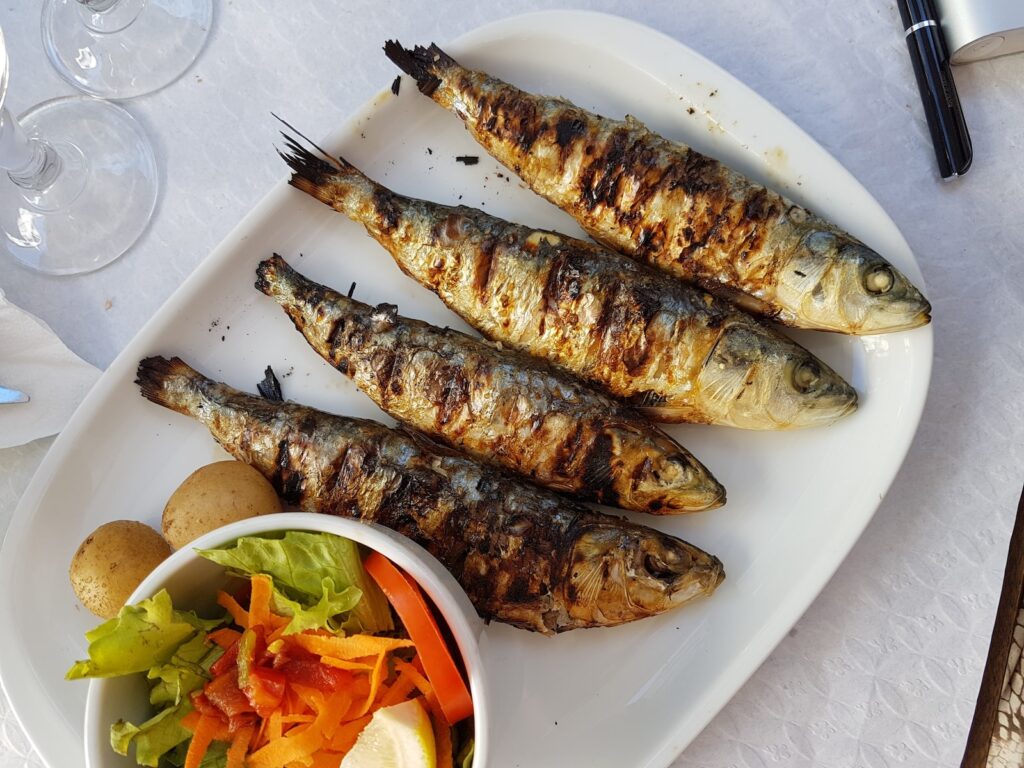Keto diets are trendy right now.
But why?
The ketogenic diet is a nutritional plan that causes your body to burn fat instead of carbs for energy.
So, what’s not to like?
Well, not everyone can follow a keto diet plan effectively without giving up.
That’s where this article comes in!
I’ll help you learn all the foods you can eat on keto so you can stick to keto.
What Is a Keto Diet?
A keto diet is a very low-carb, high-fat diet where the body’s primary energy source comes from ketones produced by the liver.
Ketosis is a natural metabolic state your body produces when you reduce carbs.
The keto diet calls for a very low carbohydrate intake of fewer than 50 grams daily.
It’s often used as a tool for weight loss, especially in overweight individuals who suffer from health complications due to insulin resistance.
But, the biggest thing with a ketogenic diet is that it forces the body to rely on its own fat stores for energy.
This usually causes weight loss, but it can also lead to increased energy, reduced inflammation, and a decreased risk for dementia.

Which Foods Can You Eat on Keto?
Here are all the best low-carb foods suitable for the keto diet:
- Meat
- Fish
- Eggs
- Nuts
- Seeds
- Full-Fat dairy
- Oils
- Low-carb vegetables
- Low-carb fruits
- Low-carb desserts
- Low-carb bread
Just ensure the carb count in the foods you eat is low and that you eat less than 50 grams of net carbs per day.
From vegetables to meats and snacks, the ketogenic diet has a lot of flavorful foods to offer.
And due to the popularity of the keto diet, keto-friendly alternatives are popping up for almost every high-carb food, ranging from bread to even rice (rice is a grain, I don’t know how they took the carbs out of it?)
In addition to that, vegetables like broccoli, cauliflower, and zucchini are also keto-friendly.
They’re low in carbs, high in fiber, and pack a potent dose of vitamins and minerals that’ll keep you healthy and energetic.
Also, if you’re trying to lose weight, eating more vegetables can be helpful since their fiber makes you more full.
Full-fat dairy is also an excellent option for keto dieters, but watch out for the carbs that come from lactose, which is the sugar that comes from milk.
But in summary, the goal of a ketogenic diet is to limit carbs so you can lower your insulin.
Just try to limit your carbs as much as possible and make keto-friendly swaps to your favorite high-carb foods, and you won’t face too many weight loss plateaus or cravings.
3 Tips for Staying on Track with a Keto Diet
- Intermittent fasting — Intermittent fasting will keep you from craving snacks and help you avoid overeating. With intermittent fasting, you restrict your eating window to a certain period of the day, for example, six hours out of the day, and then you don’t eat anything else for the rest of the day. Intermittent fasting has been shown to help improve insulin resistance, metabolic function, and weight.
- Take sea salt — If you do a low-carb diet, make sure to take around 1/2 teaspoon of sea salt with a shot of water, or salt your food more heavily. This is necessary since carbs hold water. But, when you do a low-carb diet, you eat fewer carbs and thus lose water and electrolytes, like sodium. So, you must add the salt and electrolytes back in by salting your food or drinking 1/2 teaspoon of sea salt daily.
- Wait at least six weeks — If you stop doing keto before you’ve reached your sixth week, your mitochondria won’t be fully adapted to fats, and you’ll still be slightly carb-dependent. That’s why you must stick to a ketogenic diet for at least six weeks until you decide if you should do it for longer.

Conclusion
The ketogenic diet is a low-carb, high-fat diet where the body’s primary energy source is ketones produced by the liver.
Many positive health benefits are associated with following a keto diet, including weight loss, reduced blood sugar levels, improved athletic performance, and clear skin.
There are, of course, some downsides, too, like decreased energy and performance during the first couple weeks of adaptation.
If you follow the tips in this article, you’ll be able to successfully follow a keto diet and reap all the health benefits that go along with it.
I hope this helped!
And if you want to find out how to combine intermittent fasting with keto to improve your results, you can read my article here.
- How to Make a Layer Cake at Home - June 1, 2023
- Can You Still Lose Weight If You Aren’t in Ketosis? - February 8, 2023
- Can the Keto Diet Help With Depression? - February 8, 2023




